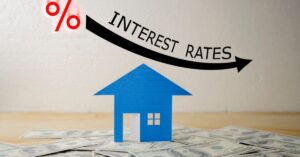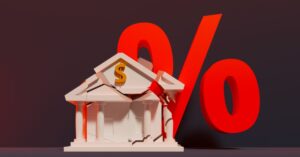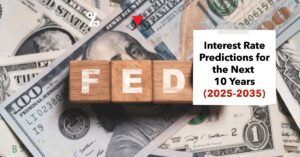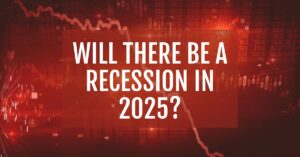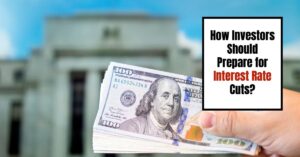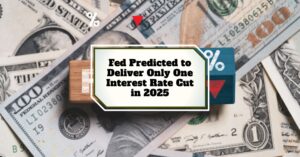The Federal Open Market Committee (FOMC) will announce its latest interest rate decision on June 18, 2025, at 2:00 p.m. EST. Following the announcement, you can tune into Federal Reserve Chair Jerome Powell's press conference at 2:30 p.m. EST for more in-depth analysis. As someone who keenly watches these announcements, I know how crucial it is to stay informed.
As a finance enthusiast who has been following the movements of the Fed for years, I've come to appreciate the gravity of these announcements and their impact on our financial lives. Let's dive deeper into what you should expect and why it's so important.
What Time is the Fed Rate Cut Announcement Today on June 18, 2025?
What's Happening at the FOMC Meeting?
The FOMC meetings are the heart of the decision-making process. The committee, which includes the Fed Chair along with other key members, evaluates the economic pulse and makes crucial decisions about monetary policy. These policies, especially regarding interest rates, have a direct impact on our wallets and the broader economy. The meeting scheduled for June 17-18, 2025, will be no different.
During these sessions, they discuss vital data, assess economic risks, and evaluate the efficacy of previous monetary measures. Think of it as a comprehensive health check-up for the economy. Are inflation levels too high? Is job growth slowing? These are the questions they tackle, and their decisions have widespread ramifications.
Why Should You Care About the Fed's Rate Decision?
The Fed's decision-making process, especially concerning interest rates, is more than just an abstract economic concept; it directly influences our everyday lives.
- Mortgages: Are you planning to buy or refinance a home? The Fed's decisions heavily influence mortgage rates. If rates go up, so do your monthly payments.
- Credit Cards: Many credit cards have variable interest rates pegged to the Fed's benchmark rate. An increase in the rate means more interest charges which impact your financial health.
- Savings: Those with savings accounts might be rewarded with higher rates when interest rates rise, boosting returns.
Understanding these dynamics helps everyone make informed financial decisions. I personally keep a close eye on these announcements to help make smart financial decisions.
Decoding the Economic Forecast
The FOMC publishes their economic forecast at these meetings. This forecast is a crystal ball, predicting the economy's future.
- Economic Growth: The growth rate expectations give insight into how fast or slow the economy might expand.
- Inflation Expectations: The committee's inflation predictions are a critical focus area, as it will signal how they expect prices to change.
- Employment Projections: These will reveal the committee's outlook on the labor market.
Historical context is very important. For example, the Fed has had to deal with economic fallouts and the rising inflation. This shapes the dialogue that you hear around interest rates today and expectations.
Recent FOMC Rate Decisions: A Quick Look
Here's a look at the recent FOMC decisions:
| Date | Rate Decision | Key Highlights |
|---|---|---|
| May 2025 | Held Steady | Cautious approach due to economic uncertainty. |
| March 2025 | Increased | Responded to rising inflation and robust job growth. |
| January 2025 | Held Steady | Evaluating the impact of earlier rate increases. |
| November 2024 | Decreased | Aimed to catalyze consumer spending during an economic downturn. |
These past moves show you the way the Fed has handled the economy and helps you to understand its current actions.
Economic Indicators: Keeping Your Finger on the Pulse
The Fed scrutinizes key economic indicators to make its decisions and you should too.
- Inflation Rates: High inflation can lead to rate hikes aiming to bring prices down to the target around 2%.
- Unemployment Rates: High unemployment may trigger rate cuts which can create job growth. Low employment might justify a hike in rates, which is a sign of a booming economy.
- Gross Domestic Product (GDP): This reveals the economy's performance. Strong GDP growth can push for increased rates whereas weak growth might suggest holding rates.
Making Sense of It All
The Fed's decisions aren't just about numbers. They are about real-world consequences. Understanding what it all means can help you make better financial choices. It gives you an edge in managing your personal finances, from investments to overall financial well-being.
After the announcement on June 18, 2025, I plan to look through the nuances as someone working in the finance sector. I'll look at the impact of these decisions through personal investments and how it will affect the health of the nation's economy.
Position Your Portfolio Ahead of the Fed’s Next Move
The Federal Reserve’s next rate decision could shape real estate returns through the rest of 2025. Whether or not a rate cut happens tomorrow, smart investors are acting now.
Norada Real Estate helps you secure cash-flowing properties in stable markets—shielding your investments from volatility and interest rate swings.
HOT NEW LISTINGS JUST ADDED!
Talk to a Norada investment counselor today (No Obligation):
(800) 611-3060
Recommended Read:
- Inflation is the Biggest Concern for Fed's Rate Cut Decision Today – June 18, 2025
- What are the Odds of a Fed Rate Cut Today, June 18, 2025?
- Interest Rate Predictions for the Next 3 Years: 2025, 2026, 2027
- When is Fed's Next Meeting on Interest Rate Decision in 2025?
- Interest Rate Predictions for the Next 10 Years: 2025-2035
- Will the Bond Market Panic Keep Interest Rates High in 2025?
- Interest Rate Predictions for 2025 by JP Morgan Strategists
- Interest Rate Predictions for Next 2 Years: Expert Forecast
- Fed Holds Interest Rates But Lowers Economic Forecast for 2025
- Fed Indicates No Rush to Cut Interest Rates as Policy Shifts Loom in 2025
- Fed Funds Rate Forecast 2025-2026: What to Expect?
- Interest Rate Predictions for 2025 and 2026 by NAR Chief
- Market Reactions: How Investors Should Prepare for Interest Rate Cut
- Impact of Interest Rate Cut on Mortgages, Car Loans, and Your Wallet

